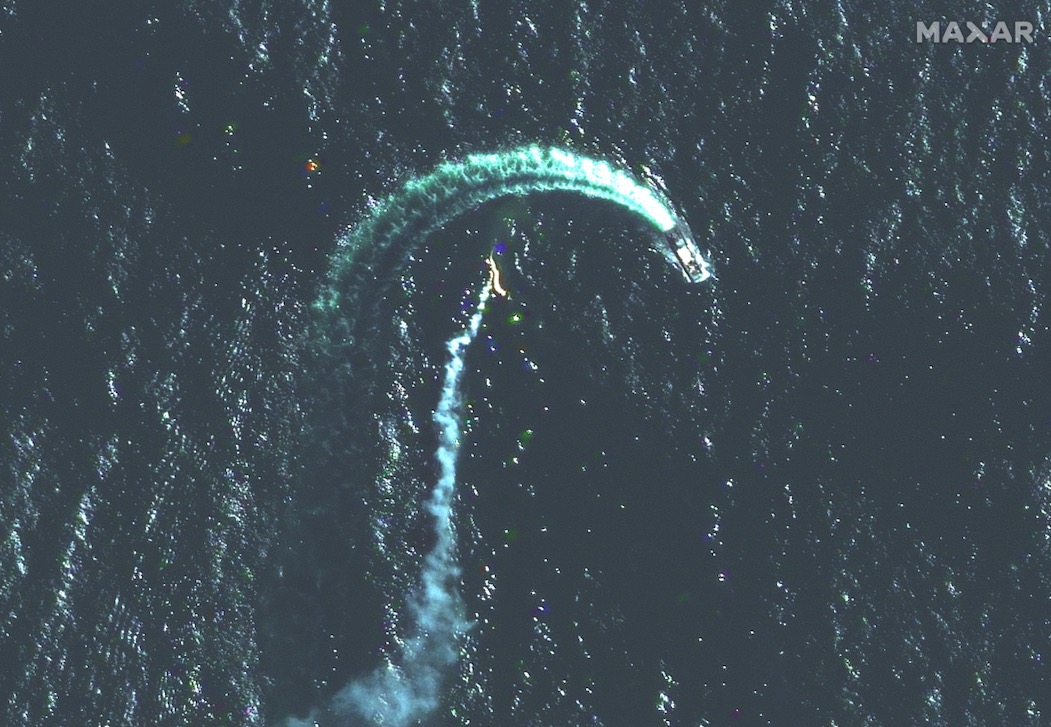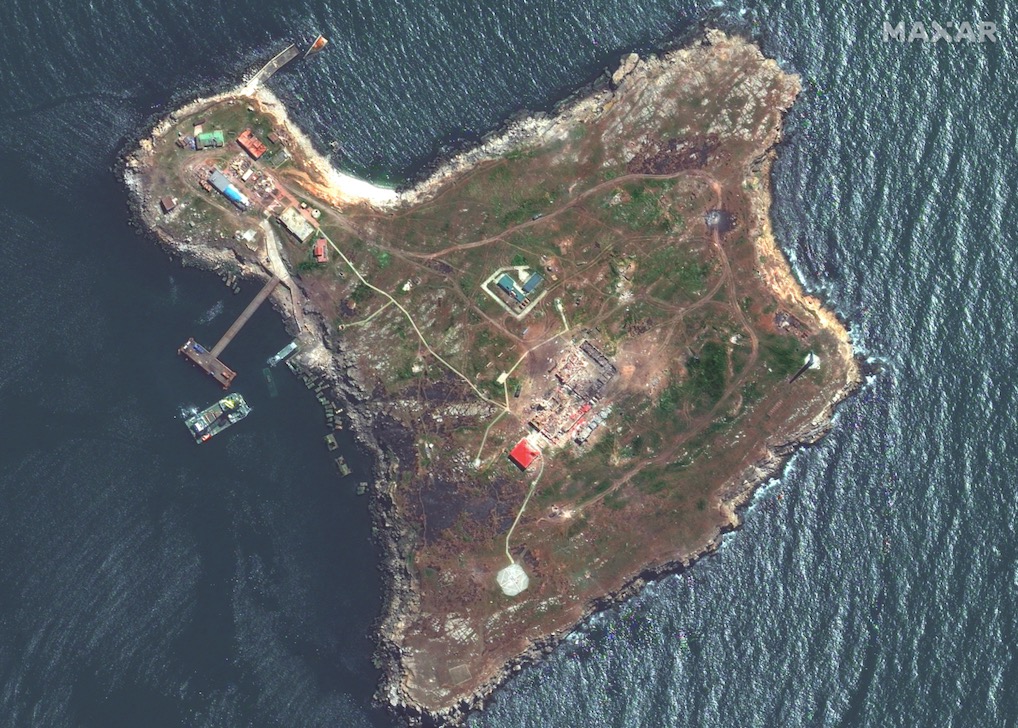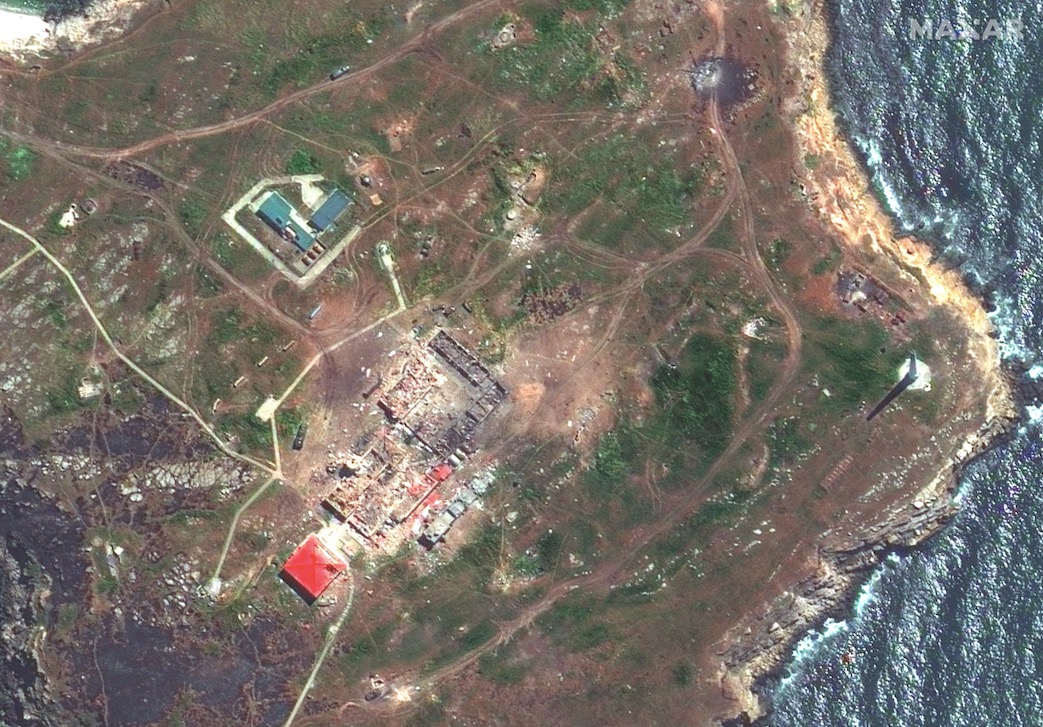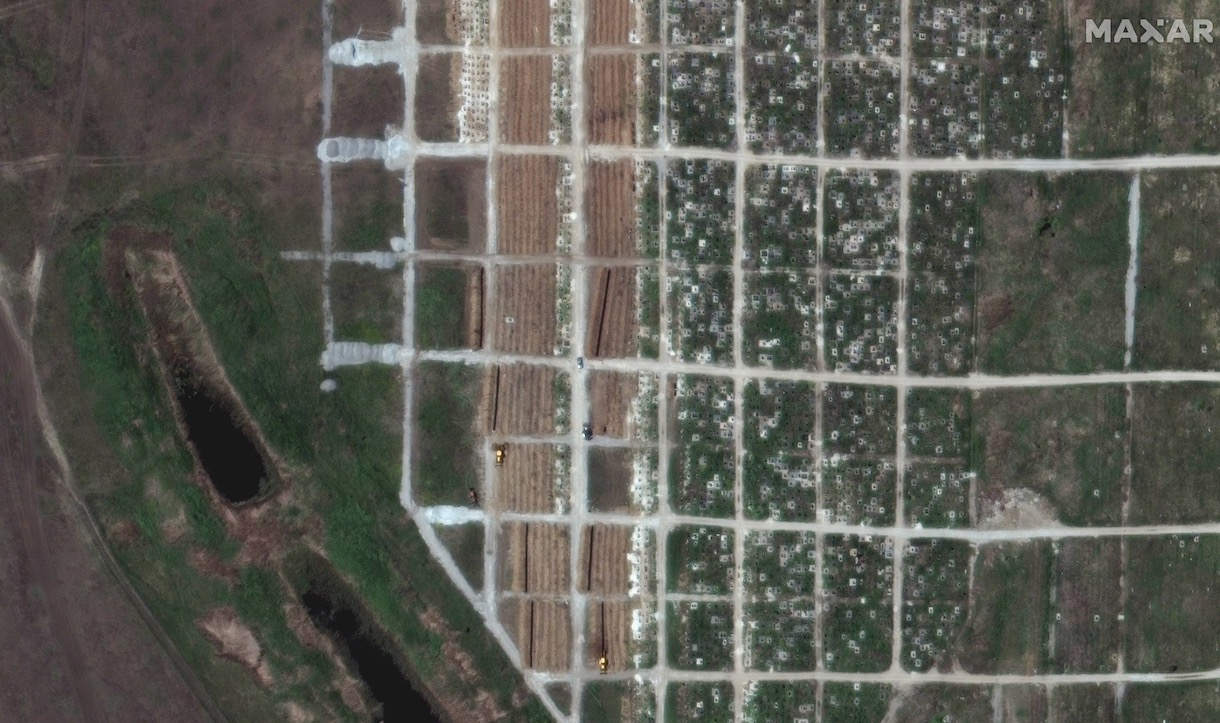
Tiny Snake Island has hosted some fierce fighting during the Russian invasion of Ukraine, as new satellite photos show.
Snake Island is a 42-acre (17 hectares) speck of land in the Black Sea, about 28 miles (45 kilometers) off the Romanian coast. Russia captured it from Ukraine in late February, a few days after the invasion began, but the battle for control of the strategically important island continues.
On Thursday (May 12), for example, Maxar Technologies' GeoEye-1 spacecraft snapped a series of photos of Snake Island, one of which appears to capture a Ukrainian attack on a Russian Serna-class landing craft.
Related: Russia's invasion of Ukraine as seen in satellite photos
Updates: Ukraine invasion's impacts on space exploration

"Smoke contrails can be seen in the area, likely from missiles/munitions that had recently been fired toward the ship, and the landing craft is seen making evasive maneuvers," Maxar representatives wrote in an emailed description of the newly released imagery.
"On the northern part of the island, a barge with a heavy-lift crane is positioned close to a sunken Serna-class landing craft that had recently been struck, reportedly by Ukrainian drones," Maxar representatives added, referring to another May 12 GeoEye-1 photo.

"Nearby, an additional Serna-class landing craft is positioned at a landing ramp," the description continues. "On the island itself, the imagery provides a closer view of the damaged buildings from recent attacks as well as several Russian air defense vehicles (Pantsir surface to air system) deployed nearby."
Get the Space.com Newsletter
Breaking space news, the latest updates on rocket launches, skywatching events and more!

Companies such as Maxar, Planet and BlackSky are giving the world a bird's-eye view of the Russian invasion. Their imagery helps government officials in the United States and other nations monitor Russian troop movements and allows aid organizations to map out their operations more efficiently, among other uses.
One city in dire need of aid is Mariupol, a port city in southeastern Ukraine that has been besieged by Russian forces since the invasion began. The siege has killed about 20,000 civilians in Mariupol so far, Ukrainian officials have said.

Maxar's WorldView-3 satellite spotted some evidence of this grim toll on Thursday, snapping a photo showing the ongoing expansion of Starokrymske Cemetery on Mariupol's western edge.
Mike Wall is the author of "Out There" (Grand Central Publishing, 2018; illustrated by Karl Tate), a book about the search for alien life. Follow him on Twitter @michaeldwall. Follow us on Twitter @Spacedotcom or on Facebook.
Join our Space Forums to keep talking space on the latest missions, night sky and more! And if you have a news tip, correction or comment, let us know at: community@space.com.

Michael Wall is a Senior Space Writer with Space.com and joined the team in 2010. He primarily covers exoplanets, spaceflight and military space, but has been known to dabble in the space art beat. His book about the search for alien life, "Out There," was published on Nov. 13, 2018. Before becoming a science writer, Michael worked as a herpetologist and wildlife biologist. He has a Ph.D. in evolutionary biology from the University of Sydney, Australia, a bachelor's degree from the University of Arizona, and a graduate certificate in science writing from the University of California, Santa Cruz. To find out what his latest project is, you can follow Michael on Twitter.









